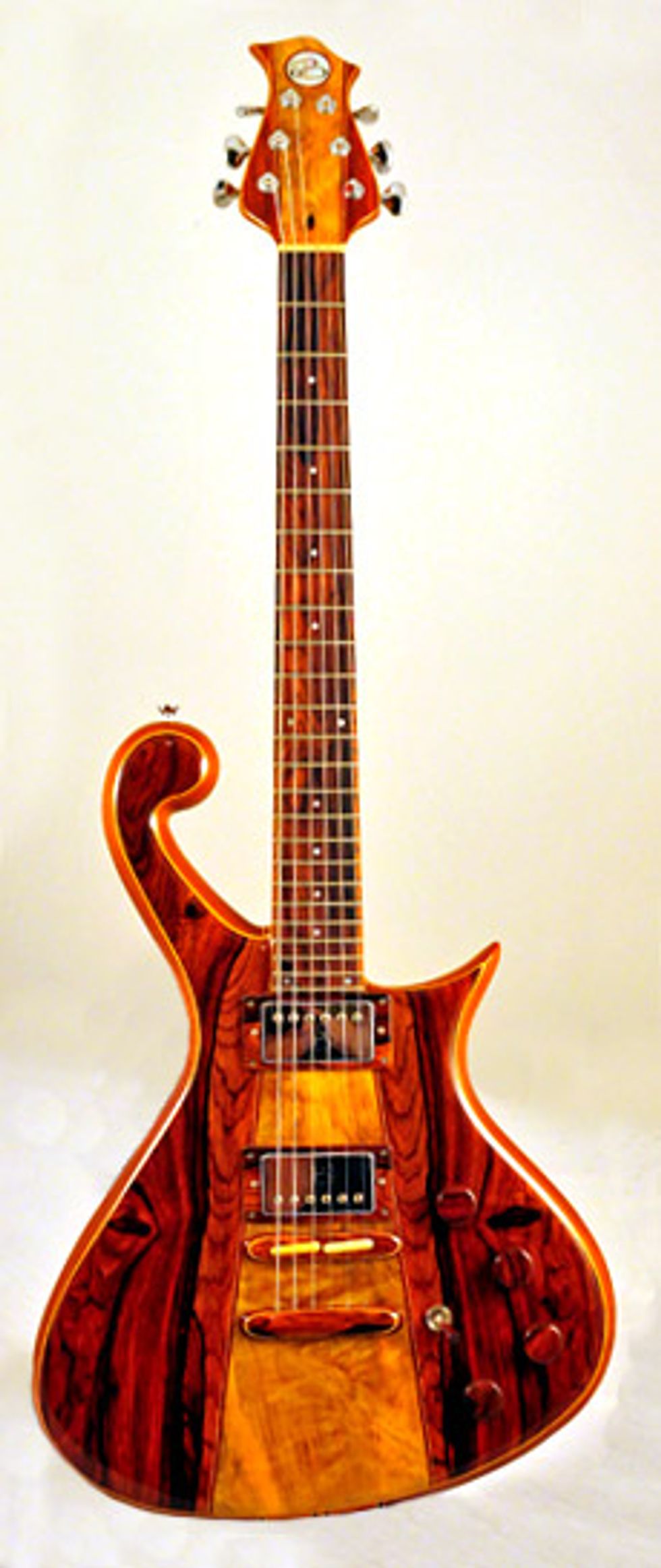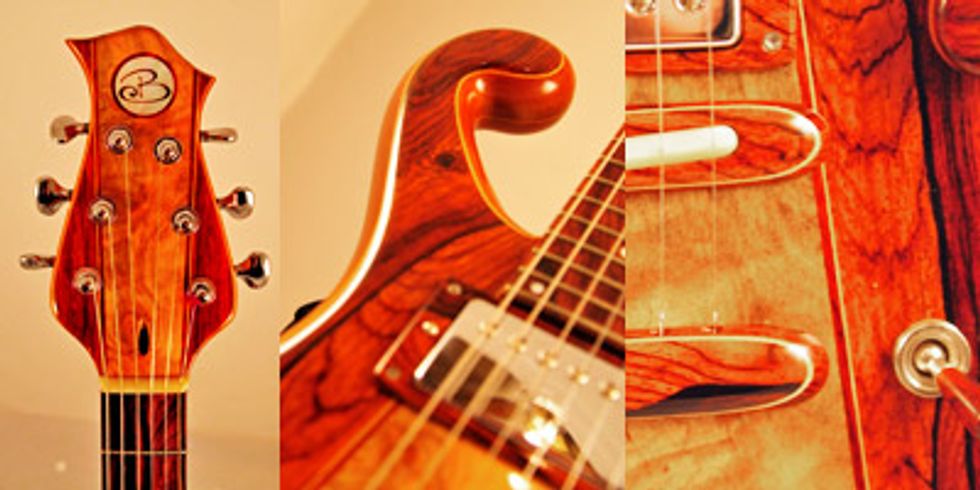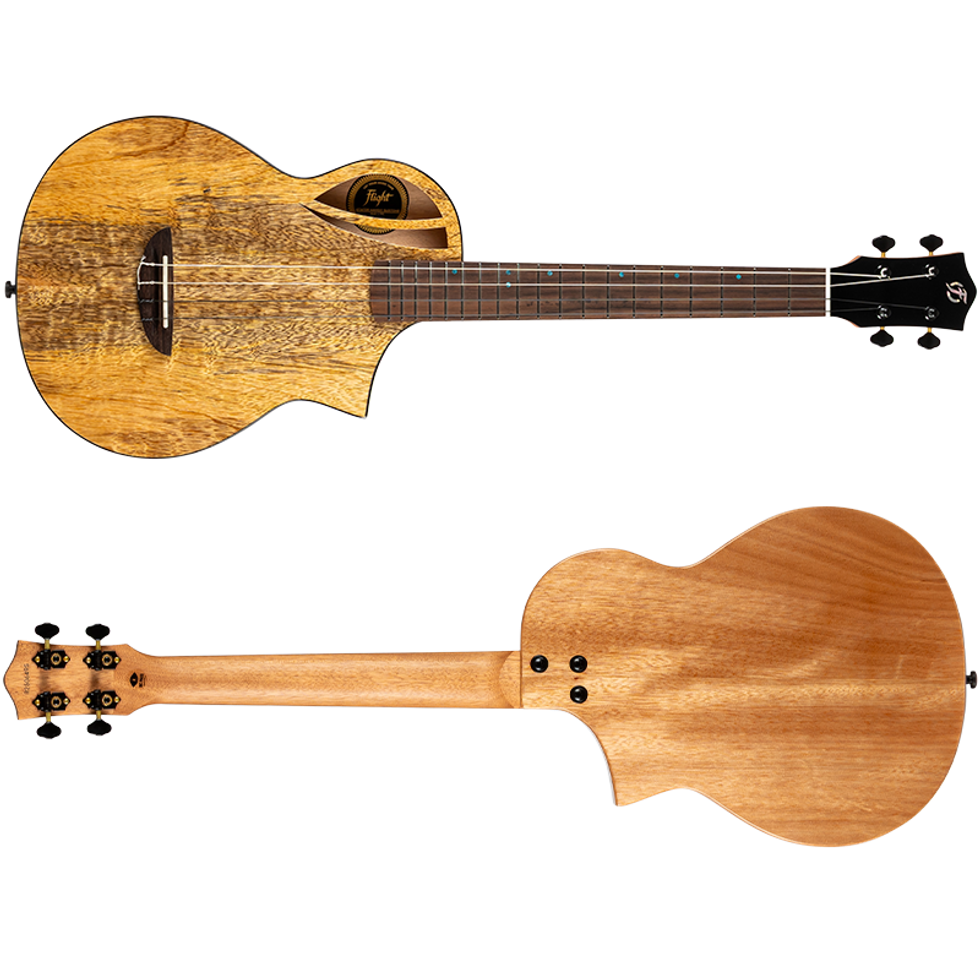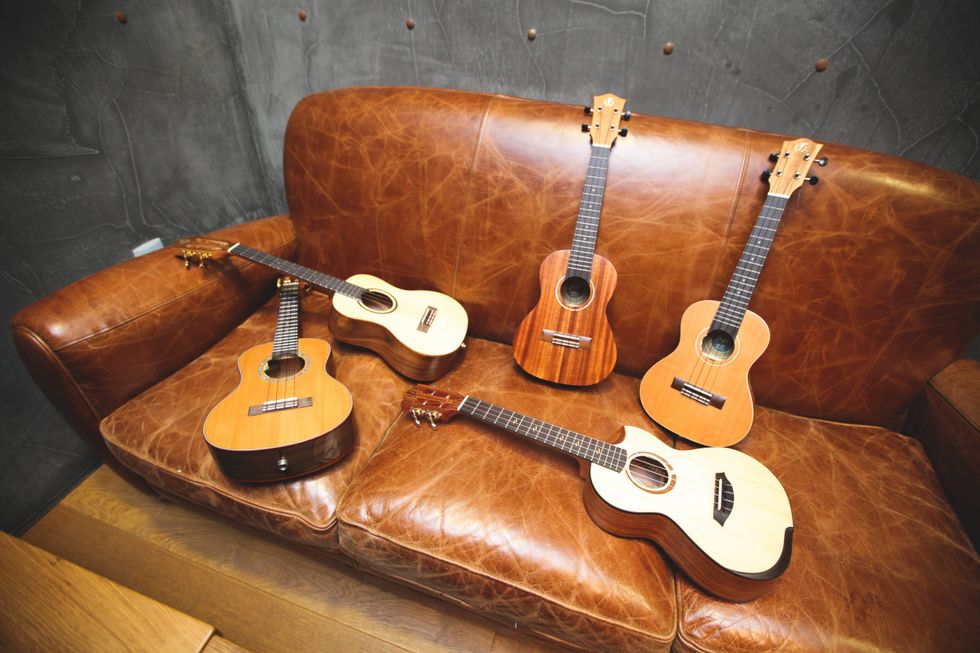 |
There is no doubt, in this age of instrument construction and design,
that making electric guitars has become an art form in and of itself.
Just as driving a finely-tuned vintage hotrod can make the person in
control feel indescribable, a guitar with a great attention to detail
can have the same effect. From single-luthier workshops to major
company-backed custom shop divisions, the industry as a whole has begun
to cater to the player who wants something just a little (or entirely)
different from their guitar. The results over the past couple of
decades have been staggering, to say the least. From simple paintings
to intricate carvings, exotic combinations of wood from around the
world—and sometimes a complete rethinking of guitar construction from
the ground up—knowledgeable luthiers have learned to combine their
artistic side with their construction know-how. The Dan Becker Guitar
Company is no exception.
Starting in the mid-nineties, Dan Becker’s company specialized in the
restoration and repair of vintage instruments. They have grown over the
past decade to what Becker describes as his “all-star team of luthiers,
techs, woodworkers, and finishers,” and have started their own line of
finely crafted instruments. Their handiwork is uniquely their own, and
their models oftentimes take drastic steps away from the look and
construction of the electric guitar (the banjo model in particular is
extremely different and eye-catching). Premier Guitar was provided with
one of their flagship models, the Imperial, for review.
At first glance the Imperial just begs to be held. The contoured edges,
the thin, rounded body profile and sculpted heel make it a very
inviting guitar, and its striking shape in combination with the wood
shades will definitely
turn heads. Some of the commonly used woods used in guitar construction
(such as figured maple) are present here, but the real head-turner is
the choice of cocobolo, a wood that is steadily gaining ground in the
guitar construction business (mostly in acoustic models). It’s a form
of rosewood that grows in Central America and is prized for its great
beauty, as well as for a unique trait—it can actually change color when
cut. It is only found in small areas of the world, which makes it very
difficult to come by and rather expensive. The effect that it has on
tone, though … it can make the guitar sound “clearer,” aiding in note
separation and affecting the midrange in a pleasing way. The cocobolo
on the face of the Imperial is a deep reddish-brown with deep, dark
brown waves running through it. The bridge does not have an adjustable
saddle in the modern sense; rather, the action must be adjusted by
adding or removing shims underneath the two saddles. In some cases,
exotic additions like highly figured wood can make a guitar look rather
tacky, but the Imperial is certainly an exception. It is simply drop
dead gorgeous.
 |
The guitar was tested through an all-stock 1973 Marshall Superbass head
into a mid-2000s Bogner 4x12 cabinet. Overdrive tones were achieved by
driving the Marshall and boosting it slightly with a Fulltone OCD
pedal. From first impressions, the Imperial is a very focused-sounding
instrument. Custom wound Seymour Duncan “Beckerbuckers” encourage this
assessment, as does the very low action and small frets. I’m sure after
adjusting the action and making a few other changes it would be better
suited for rock playing, but why mess with a good thing? Jazz tones
abound in this guitar, and I couldn’t keep myself running through jazz
lines and progressions for as long as my fingers would hold out.
Chording with this neck is extremely comfortable. Lead lines fly off
the fingerboard, but I found myself more at ease with simple runs
without wide bends or vibrato. The smaller frets make it more difficult
to do this, which is why a lot of rock players prefer larger frets.
However, smaller frets usually allow players to move faster around the
fretboard. The pickups have an awfully nice balance, neither one being
louder or more abrasive than the other. As a matter of fact, it was
very difficult to get a piercing, icepick tone out of this guitar; the
highs are so smooth, clear and full that getting a bad clean tone
seemed more of a challenge than getting a good one. When overdriven,
the instrument sings, but it needs more in the low-end department. The
lows were tight, but just not that present in the tone. It’s a rather
minor complaint, but I felt the guitar was lacking here.
The playability of the Dan Becker Imperial is enormous. Quite simply,
it’s a terrific instrument, perfect for styles such as jazz and fusion.
Chording is a breeze and the comfort factor is off the charts. Rock
players might find themselves fighting with the guitar, as the smaller
frets and tight feeling of the instrument hinder a lot of the flashy
styles that they like to employ in their music. In addition to being a
fantastic sounding and playing instrument, it is truly a work of art in
terms of construction, design, material choice and visual chutzpah.
Buy if...
jazz and fusion are your thing, and you need an electric guitar with fast, smooth playability and a smooth top end.
Skip if...
you’re more of a rock-oriented player and need a very present low end, or you’re looking for more of a no-frills instrument.
Rating...
MSRP $6800 - Becker Guitars - beckerguitars.com |



















